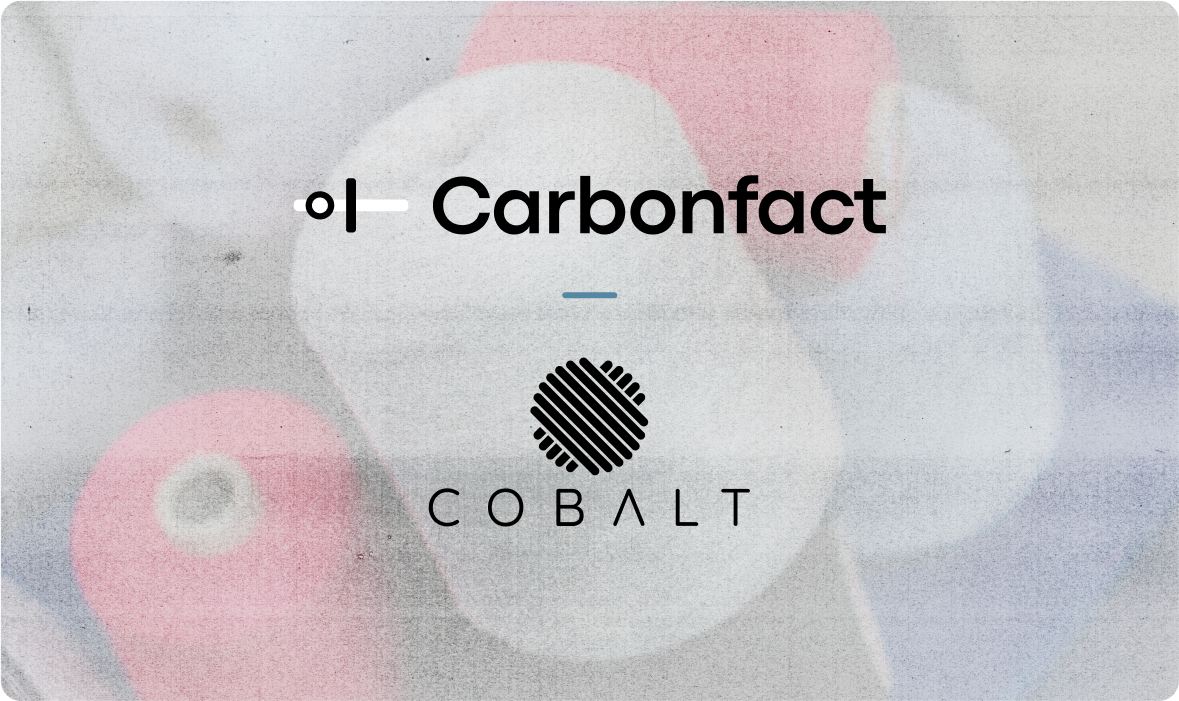Carbon Accounting software
tailored to apparel and footwear
Significantly reduced time and effort. 100% transparent. GHG protocol-compliant.
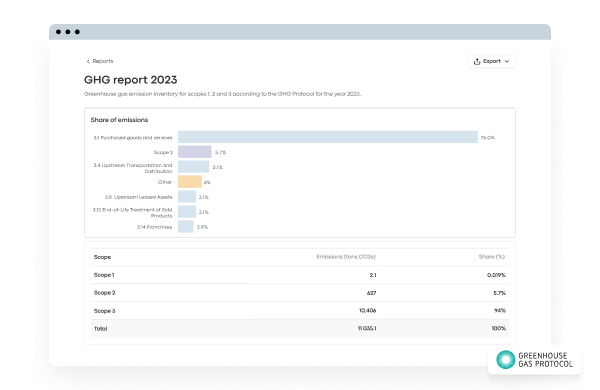
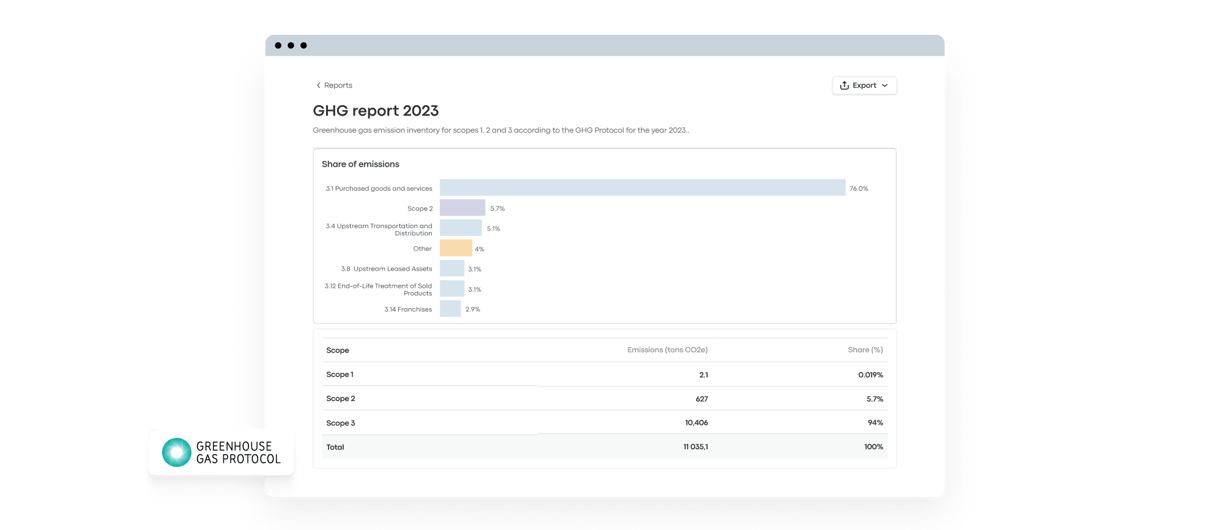
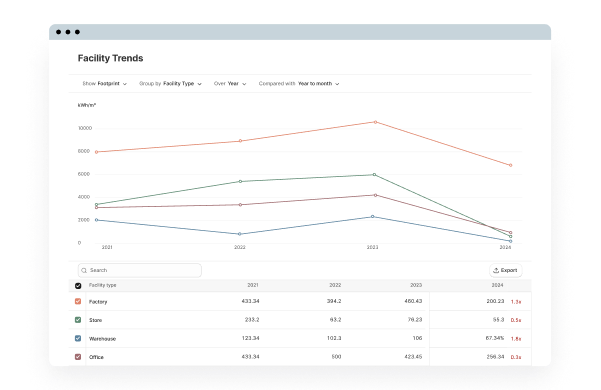
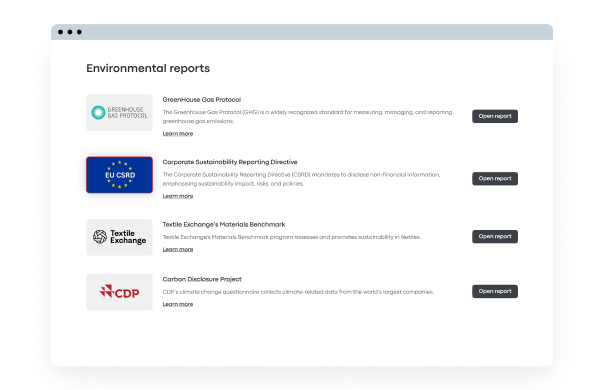
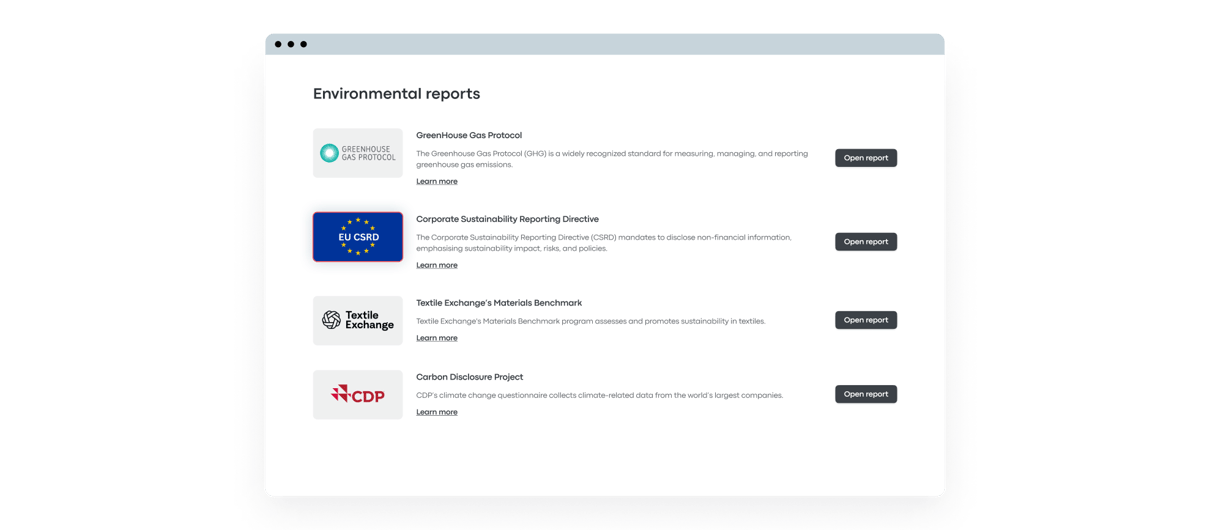
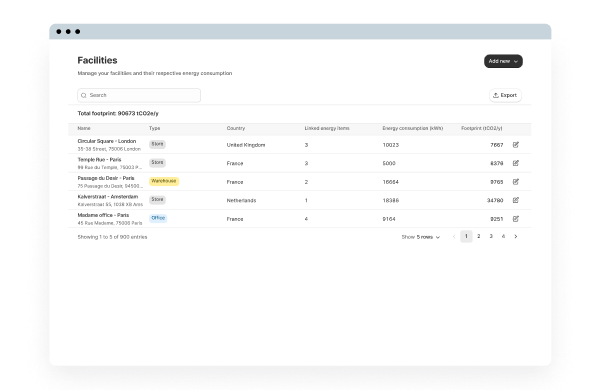

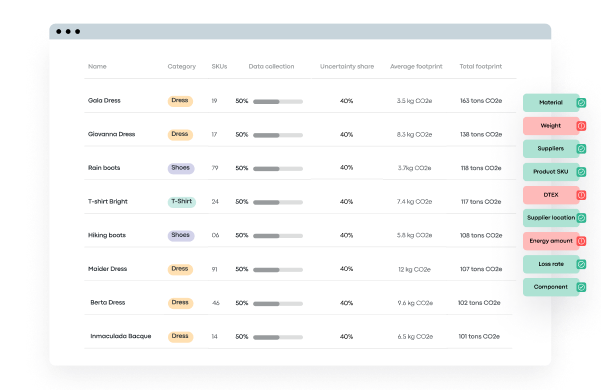
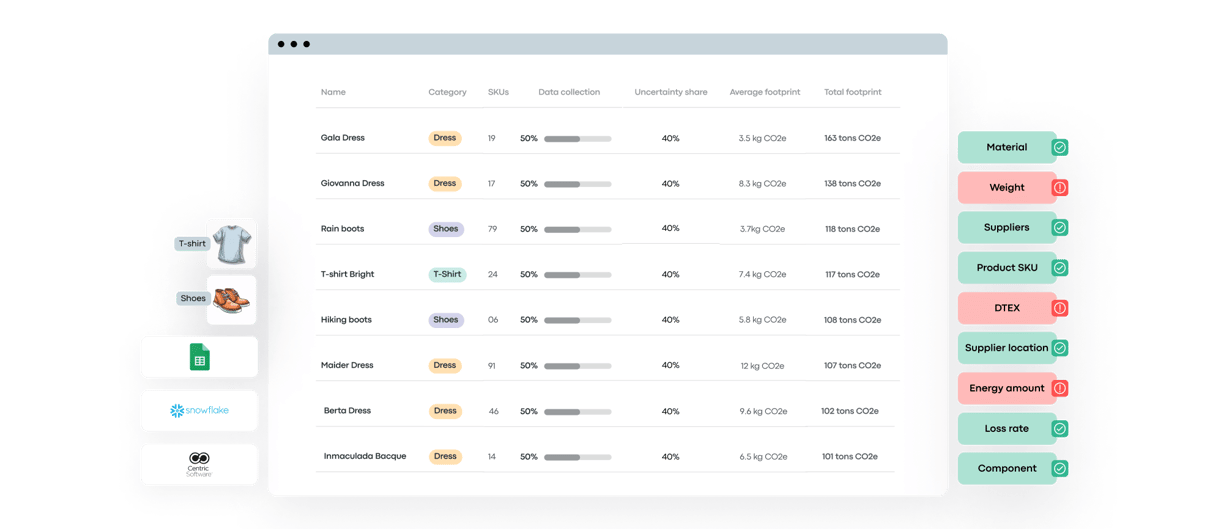
Selected by 150+ fashion, luxury and footwear brands










Built for fashion
Focused exclusively on apparel and footwear, our granular supply chain knowledge enables us to deliver the most accurate results and act as an extension of your sustainability team.
No templates
Carbonfact’s team does the heavy lifting when it comes to importing your diverse data sets. We identify gaps and anomalies and fill in the missing details such as component weights and dtex.
Activity-based
Thanks to our product-centric approach, Carbonfact doesn’t rely on spend-based information when calculating your emissions, making our results most accurate and future-proof with the upcoming regulations.
How Carbonfact works
Our journey begins by ingesting all your existing data. We consolidate and clean your diverse data sets, from any source, in any format. To reduce your workload to a minimum, we can build a custom connector that integrates with your existing systems, automating future data import.
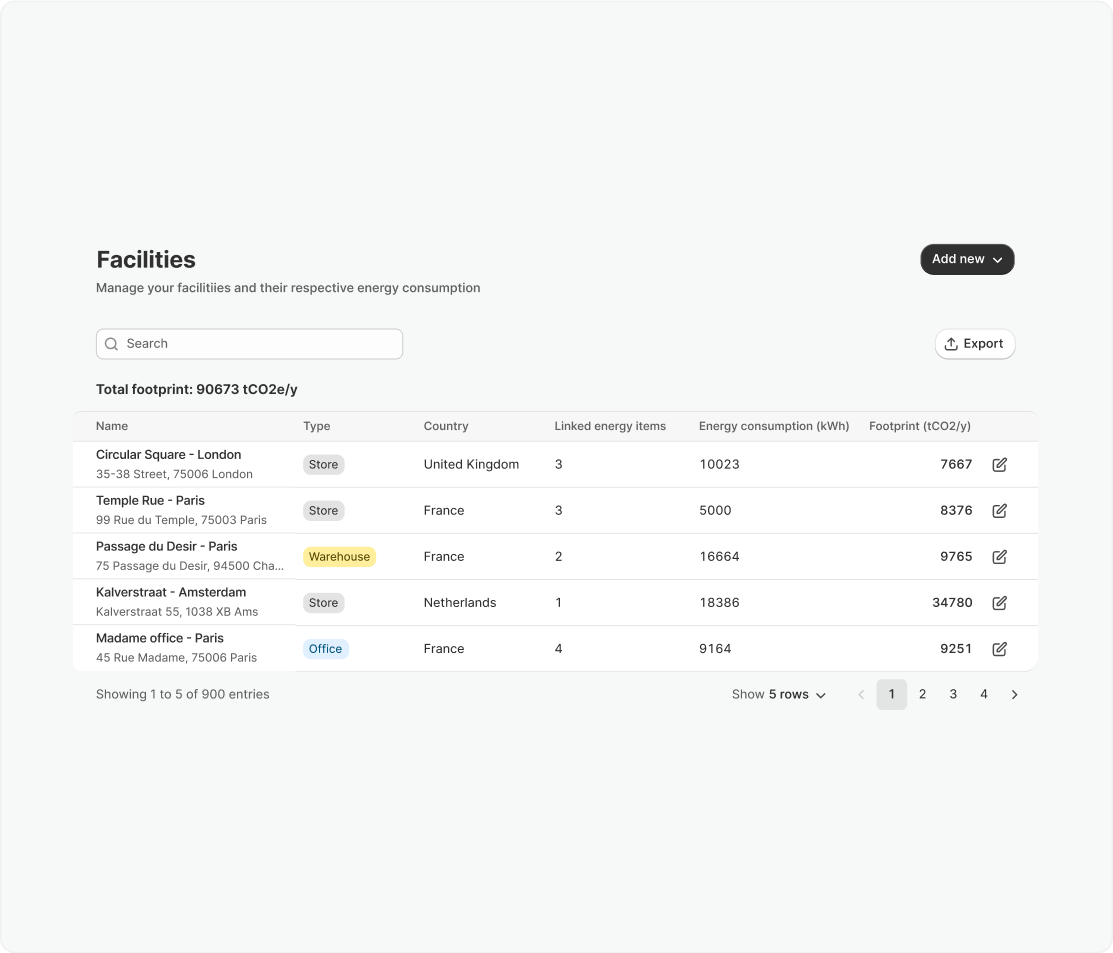
We analyze your data, detect errors and fill in your gaps. Our data module - trained on extensive primary data sets - automatically fills in missing details like component weights, d-tex, and transport.
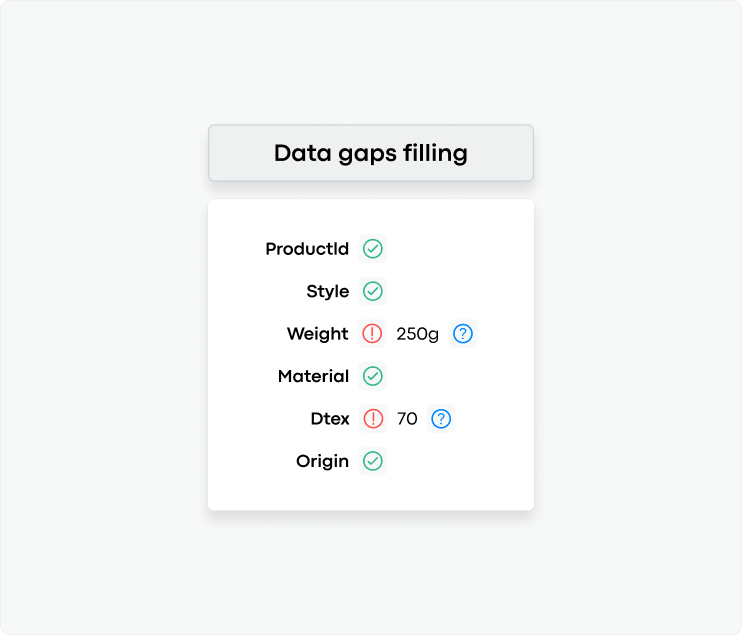
Once your data is processed, we calculate the environmental impact for your organization. We follow the Greenhouse Gas Protocol standard and cover all scopes (1,2,3). We use activity-based data to calculate your Scope 3.1 Purchased Goods and Services, which results in a highly detailed view of your product-level impact.
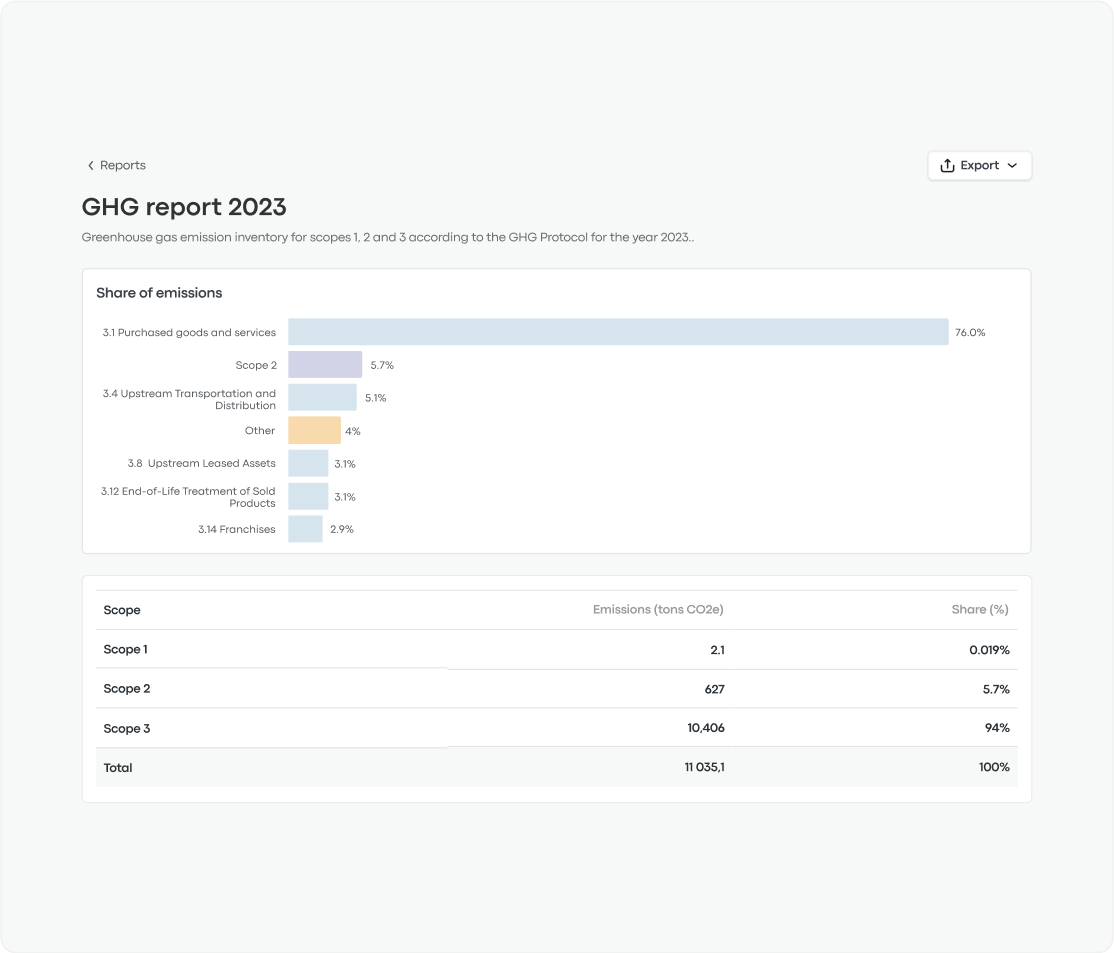
With Carbonfact, you will receive more than a static PDF, all your data is accessible on a live platform. View and edit data, spot year-to-date trends, and build custom reports. You can also access detailed process-level data for each of your products and use our simulation tools to build decarbonization plans.
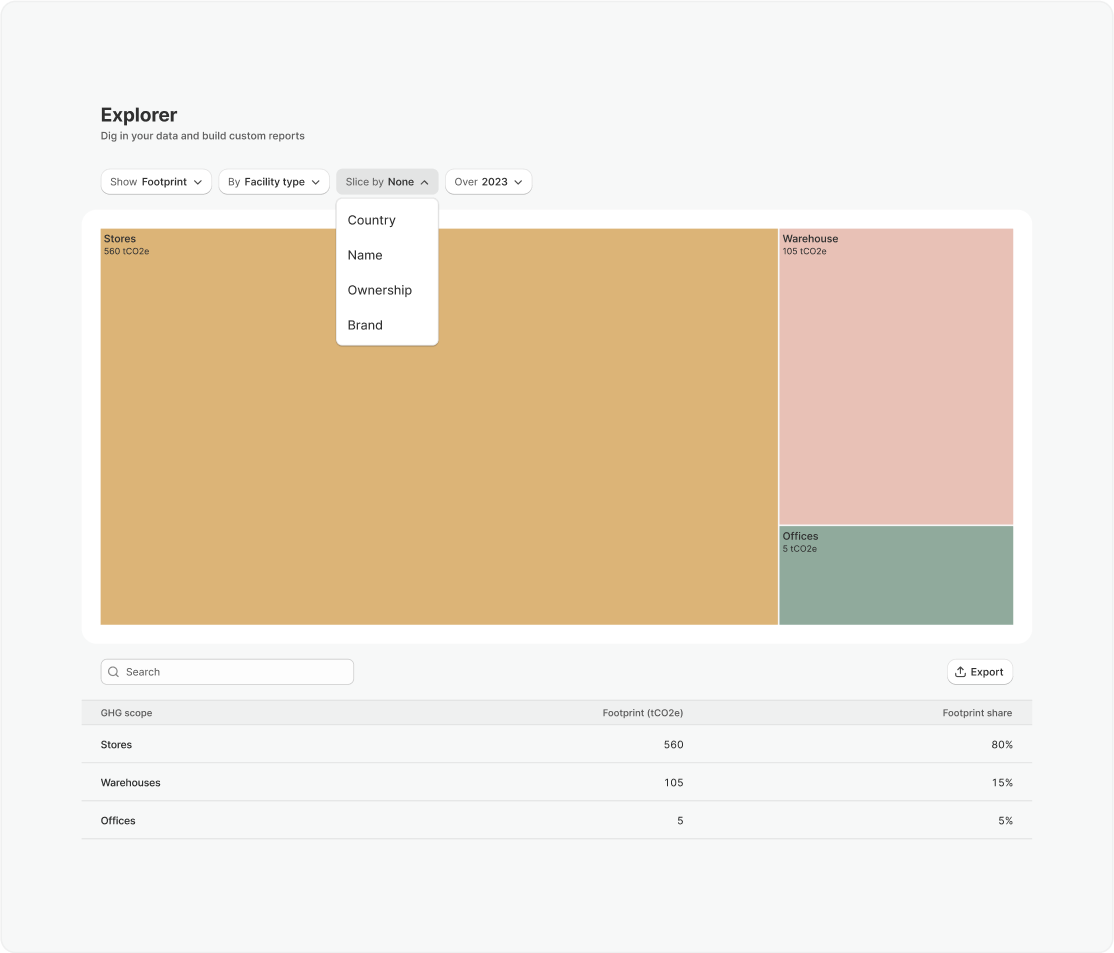
Our team of engineers, climate, compliance, and data experts is there to support you in setting realistic environmental targets aligned with a 1.5-degree economy (approved by the SBTi).
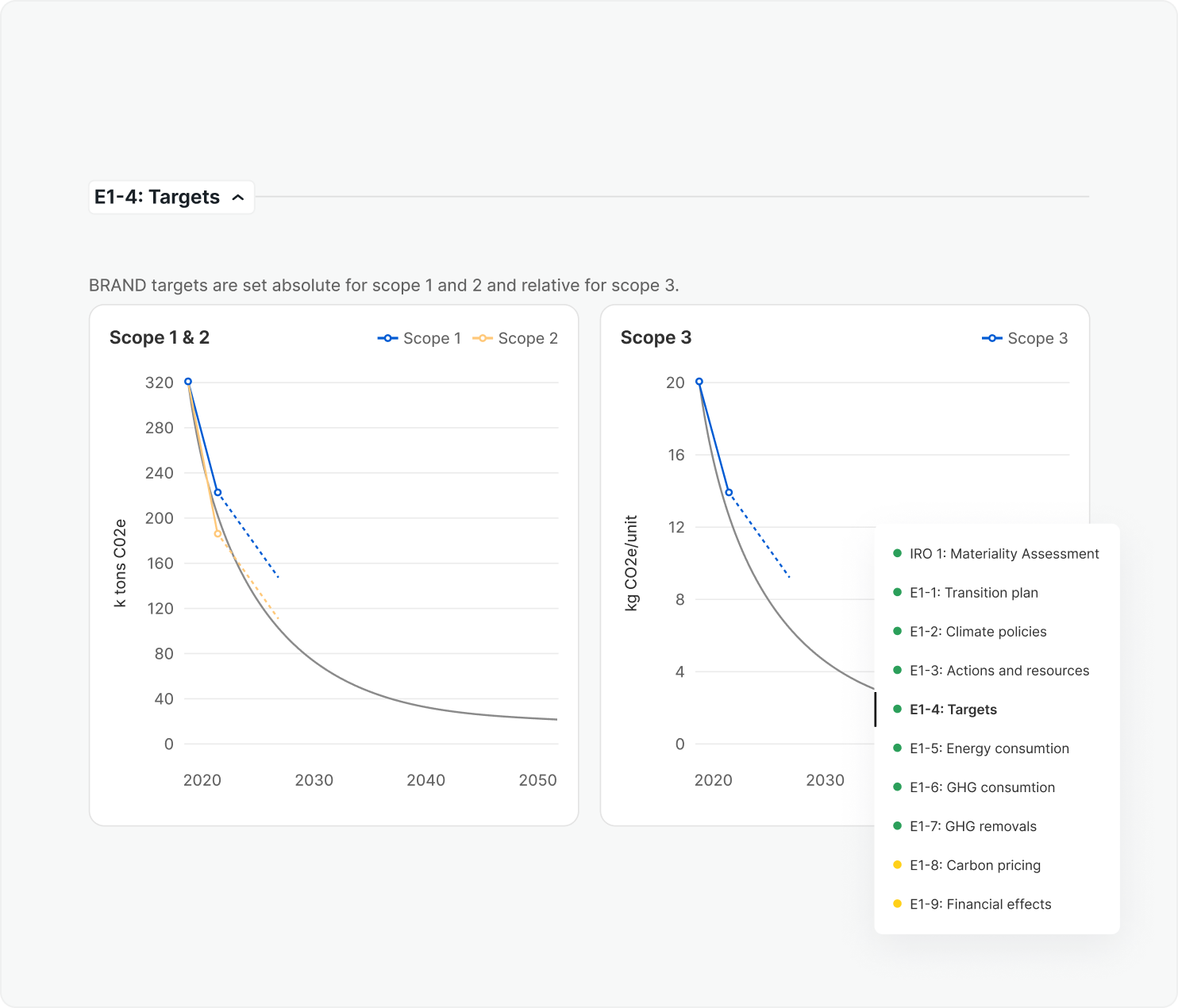
Automatic creation and formatting of reports in multiple frameworks, such as CSRD and CDP. Edit the automatically created narrative and export it in an editable format that allows easy integration into your reporting document.
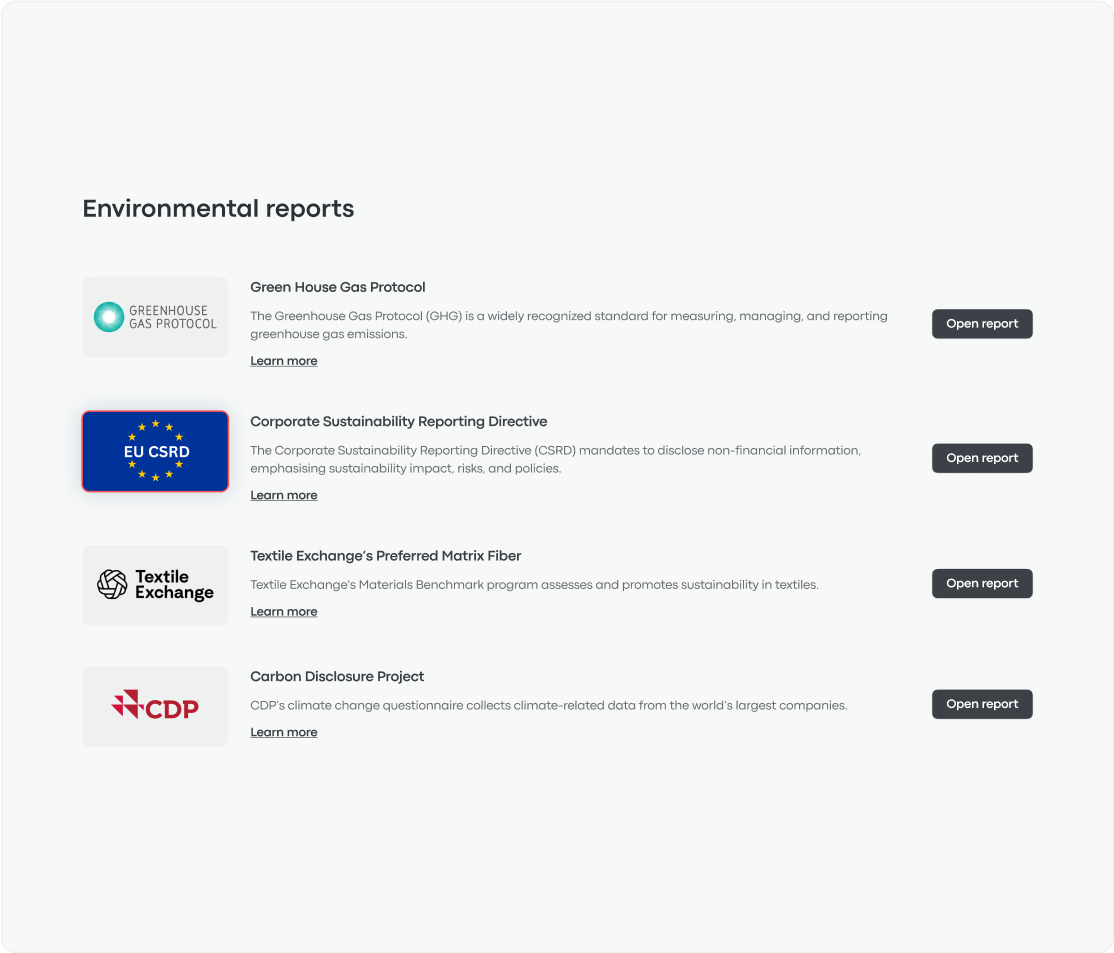






Full GHG inventory
Carbonfact provides comprehensive carbon accounting for Scope 1, 2, and 3 emissions based on the GHG Protocols’ standards.
Activity-based data
We calculate your Scope 3 emissions by aggregating product emissions and using activity-based data, providing data that can drive decisions.
Science-based
Calculations are based on the ISO14040 norm, GHG protocol, and the EU’s PEFCR, making it future-proof and compliant.
Facilities
With customizable data inputs for facilities, employee travel, and other factors such as IT and marketing, you can get a detailed overview of your carbon emissions.
No templates
We do the heavy lifting when it comes to cleaning, normalizing, and consolidating your data, significantly reducing your time and effort.
Data gaps filling
Carbonfact fills in your missing data, using heuristics and compliant secondary data, ensuring completeness and compliance.
Transparent calculations
All calculations and data sources are 100% transparent. Any updates are documented and released in versions, ensuring a perfect audit trail.
Interactive platform
Not just a static pdf report but our rich suite of simulation, analytics and reporting tools enables to use your data to decarbonize.
"We have moved from spend-based carbon accounting into Carbonfact to prioritise primary data and get more accurate calculations. The main reason for us to choose Carbonfact is that we now not only get our company's total carbon footprint but also break it down for each of our products. Thanks to Carbonfact’s focus on the apparel industry we get life cycle assessments with industry specific data for all our products in an easy way. Which helps us make the right decisions and reach our goal of reducing our emissions by 50% before 2030.”

Malin Bosaeus
Global Sustainability Manager
at Happy Socks
"At Cobalt, our goal was to reduce our reliance on external consultants and gain transparency in the calculations. We found our solution in Carbonfact, which perfectly integrates with our existing IT. The platform automatically extracts purchase order details from our ERP and PLM data, eliminating manual entry and providing us with insights into our year-to-date emissions. Each data point is clearly labeled with its source—be it our own ERP system, Carbonfact's own calculations, or external databases—ensuring complete transparency."

Ellen Arosio
Senior Compliance and Sustainability Manager
at Cobalt Fashion
"With an increasing number of regulations, we heavily rely on Carbonfact to supply us with reliable data for disclosure purposes. We are fully aware of the risks of greenwashing and Carbonfact proves to be an invaluable tool in ensuring that the data we share is reliable. What truly impresses us about Carbonfact is its solid, science-based methodology combined with its fashion-oriented approach, which makes us feel that they are experts in our field."

Eve Morel
ESG Compliance Officer at Adore Me
"Among the crowded market of carbon management tools, Carbonfact stood out for us. Their solution met our specific needs of automating carbon footprint calculations for all our products and emission scopes in the textile industry. Carbonfact's LCA expertise, smart approach to handling data gaps, and ability to connect and feed calculation results back into our systems were key factors that convinced us.”

Katya Kruk
Impact & Innovation Director at ARMEDANGELS
"Allbirds was founded to create better things in a better way, a mission that inspired our laser-focus on carbon reduction -- and eventually, labeling each of our products with its carbon footprint. As we continue to grow, Carbonfact's offerings, particularly its product-level focus for footwear and apparel, ensures we can both measure our carbon footprint and actively find ways to reduce it. Carbonfact has been instrumental in helping us model different scenarios and make informed decisions that align with our sustainability goals."

Aileen Lerch
Sustainability at Allbirds
“With the help of Carbonfact's production scenario simulator, we were able to assess the environmental impact of our supply chain and make an informed decision to move part of our manufacturing from China to Vietnam. This change has resulted in a 12% reduction in the carbon footprint of our upcoming January 2024 spring collection. “

Nicolas Gand
VP Production at Adore Me
Integrations
Our automated data ingestion feature imports and syncs data from any source, in any format, eliminating the need for manual entry and minimizing data-entry errors. Whether your data is stored in a database like a PLM or ERP system, a data warehouse like Snowflake or Google BigQuery, or even an Excel file, we’ve got you covered.

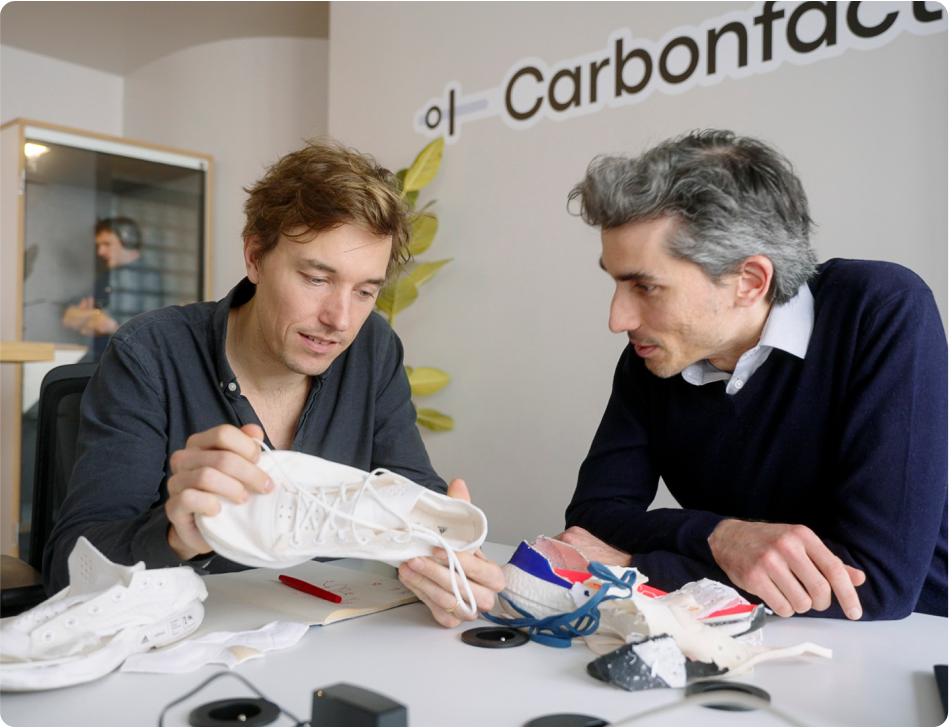
An extension of your sustainability team
While our platform handles the heavy lifting, our team of engineers, climate, compliance, and data experts is there to support you every step of the way 💪.
Direct access to our in-house climate, fashion, and LCA experts
We guide your supplier data collection and fill your data gaps
We help you design decarbonization strategies and disclosure
![[Guide] Carbon accounting for fashion, textile, apparel, and footwear companies](https://www.carbonfact.com/hs-fs/hubfs/CA%20-%20Opt1.png?width=600&name=CA%20-%20Opt1.png)
[Guide] Carbon accounting for fashion, textile, apparel, and footwear companies
Your complete, hands-on guide to Carbon Accounting and the GHG protocol for fashion, textile, clothing, apparel and footwear companies.
 Angie Wu
Angie Wu

How and When to Rebaseline Carbon Emissions: Guidance for Apparel and Footwear Brands
For fashion brands: Why should you re-baseline and how to approach it. See examples on how apparel brands are communicating a change in bas...
 Patricija Karpaviciute
Patricija Karpaviciute
What is carbon accounting in the apparel and footwear industry?
Carbon accounting measures greenhouse gas emissions across every stage of a product's lifecycle — from raw material sourcing to production, transportation, and disposal. For fashion brands, it provides insights into which parts of the supply chain are most carbon-intensive, enabling targeted sustainability efforts.
Why is carbon accounting important for apparel and footwear brands?
Carbon accounting empowers brands to understand and reduce their environmental impact. It aids in meeting sustainability goals, enhances transparency for stakeholders, and ensures alignment with evolving fashion industry regulations around carbon emissions, such as CSRD.
Can the platform measure Scope 1, 2, and 3 emissions separately?
Yes, Carbonfact’s platform supports detailed measurement of GHG Scopes 1, 2, and 3 emissions. For Scopes 1 and 2, the platform utilizes activity-based measurement, while for Scope 3, it can track specific categories such as Purchased Goods (often 80% of a brand's emissions), Upstream Transportation, Product Use, and End-of-Life Treatment. Where appropriate, Carbonfact can also apply spend-based measurements for other Scope 3 categories, ensuring that brands have a complete view of their emissions footprint.
What environmental indicators can the platform measure?
Carbonfact’s platform aligns with PEFCR methodology, tracking 16 environmental indicators, including CO2e, water use, land use, energy consumption, waste, and chemicals. The platform also supports all 24 indicators for the French EcoScore and is designed to integrate with major protocols like SBTi, including FLAG requirements. Built with the vision of translating GHG and PEFCR documents into actionable software, Carbonfact enables brands to track both carbon and broader environmental impacts.
How does Carbonfact ensure data transparency?
Transparency is integral to Carbonfact’s approach. All data sources, assumptions, and methodologies are fully accessible to users, allowing them to track the origins and updates of their carbon data. This transparency ensures credibility and prevents risks associated with greenwashing.
What emissions does Carbonfact's software measure?
Carbonfact measures Scope 1 (direct), Scope 2 (energy-related), and Scope 3 (supply chain-related) emissions. This comprehensive approach includes emissions from factory energy use, transportation, and upstream processes like fabric production, giving a complete view of a brand's carbon footprint.
How does Carbonfact handle missing data?
Carbonfact bridges data gaps through two key features:
Carbonfact Heuristics: A database with aggregated data from 150+ brands, providing insights on materials and manufacturing techniques.
Data Augmentation Rules: Custom rules that leverage clients' knowledge of products, enriching their data for accuracy.
Additionally, Carbonfact draws on databases like Ecoinvent, EF 3.1 and Base Empreinte®, and its Science team creates bespoke emission factors when needed, ensuring comprehensive and reliable data coverage.
Can Carbonfact help with regulatory compliance?
Yes, Carbonfact aligns with frameworks like the GHG Protocol and CSRD, which are becoming mandatory for apparel and footwear brands globally. It assists in compliance by providing standardized carbon accounting practices, making it easier for fashion brands to adhere to regulatory demands and disclose their emissions transparently.
